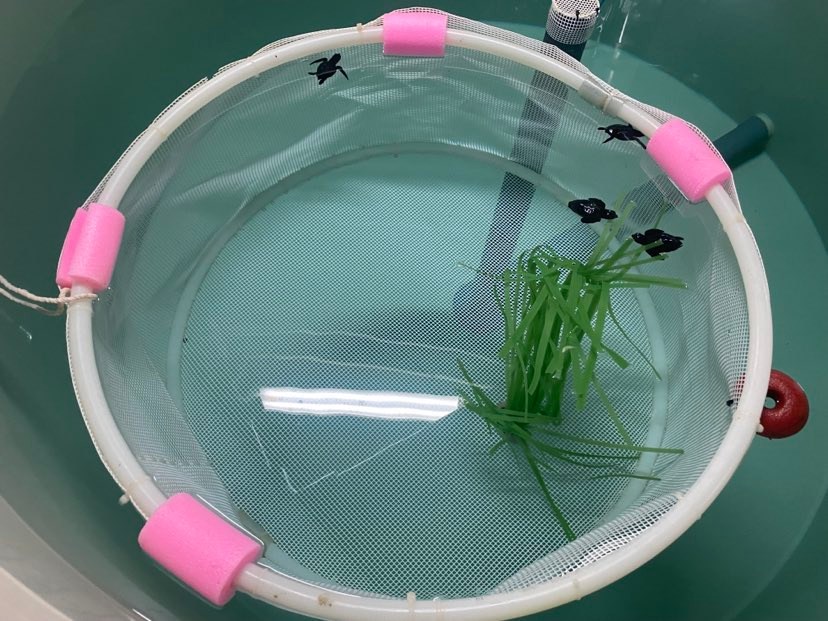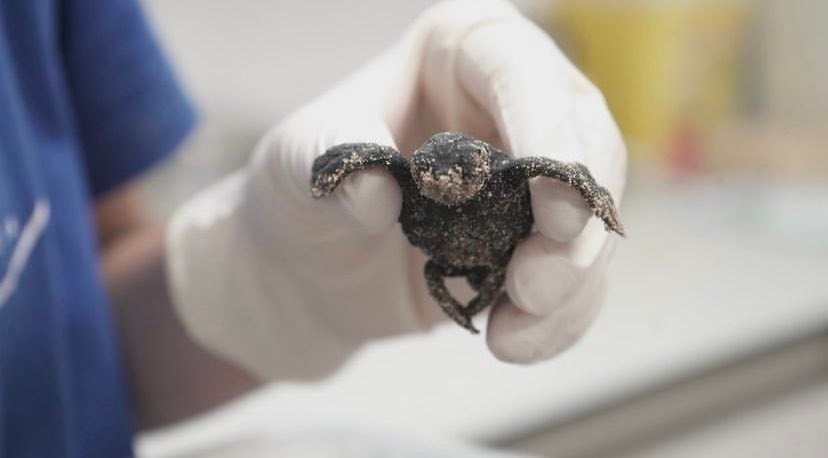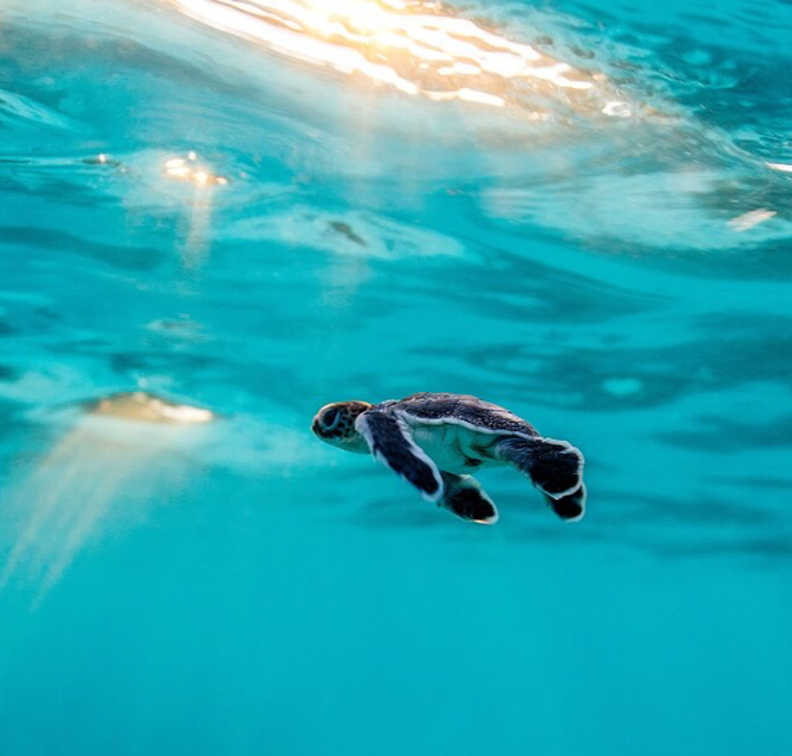Diving capacity development
When looking at the results, all the variables increased significantly with the sea turtles gaining weight, except the mean duration of non-feeding dives. It could be due to the high mean duration obtained during the first days of the animals in their water tank, maybe because their frenzy period is lasting longer in captivity.
In general, the diving durations obtained were shorter than found in the literature; it might partly be because of captivity conditions (tank depth, food provided, filming during the day only).
Another important factor to take into account is the fact that the individuals came from different nests and hatched at different periods, therefore intergroup differences might influence some results.


Relation with lung size
A significant increase in lungs volume was observed with sea turtles increasing in age. It was confirmed in literature that resting lung volumes were increasing with age and weight, and that breath-hold duration was increasing with lungs size. However, there is not necessarily a correlation between lung volume, buoyancy regulation and dive duration, and the volumes obtained in this study were at rest and not the total lung volume when inflating the lungs before a dive.
Limitations
Several limitations could have impacted the results, like the small sample size or the fact that the sea turtles observed were not the same throughout the study. Filming only by day for a 2h period could also be a bias, considering sea turtles spend more time underwater by night while resting.
Concerning the dataset, the data point at 2 years old could be considered a high leverage value, influencing the relationship between diving variables and weight. More data would have to be collected from younger sea turtles.
Some other variables may have impacted the data, like water temperature, incubation temperature of the eggs, tank depth, and the lack of foraging behaviour in captivity.

Overall conclusion
This project aimed to identify the key features of the diving capacity of loggerhead sea turtle hatchlings and young juveniles in captivity. With Head-Starting programs gaining importance for the conservation of vulnerable young sea turtles, studying their behaviours in captive facilities could help to understand more about their ecology and movement patterns in the wild. Overall, the breath-hold duration of the animals during a dive, as well as the time spent at the bottom of their tank and the time fraction spent submerged, increased with growth in weight. The increase in animals’ lung capacity was also observed and could contribute to diving capacity improvement with growth.
Although these results might not be as representative as real diving performances in wild sea turtles as with studies performed at sea, this study still provides valuable insights into how young loggerheads behave during their initial months of diving.
It could allow to develop protection strategies, especially against bycatch, as smaller turtles are more likely to drown if caught in a fishing net.